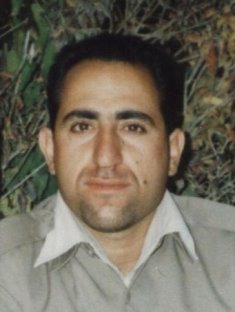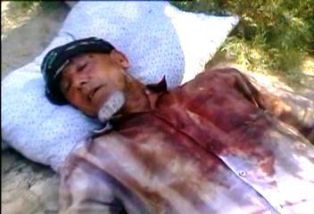News of the imminent stoning of one Iranian woman for alleged adultery galvanized a global movement to save her. But sadly, her case was not an anomaly.
Sakineh Mohammadi Ashtiani has been imprisoned in Tabriz Prison in northwestern Iran
Judges relied on “wisdom” rather than evidence to determine her guilt, using a loophole in the Iranian legal system. But even by Iranian legal standards, the case was fraught. Ashtiani had no lawyer until late in the appeal proceedings, despite being illiterate and unable to speak Farsi, the language used in court, according to the International Committee Against Execution (ICAE). She retracted a confession she says was made under duress. Nonetheless, court after court signed off on her death warrant, until all legal avenues had been exhausted.
Her lawyer, Mohammad Mostafai, a frequent defender of death-row inmates in Iran Tabriz Iran
For the last week, Iranian officials have said the case is under review on “humanitarian grounds,” but their reasoning is as unclear as Ashtiani’s fate. They have steadfastly denied that international attention had any effect on the decision, but they’ve also taken care to impose a media blackout on the case in Iran Tabriz
This directly contradicts what Iran New York
Still, while there is no guarantee that Ashtiani will walk free, given the global attention she’s received, she likely stands a better chance than the some 140 other prisoners sitting anonymously on death row in Tabriz alone, according to the ICAE’s count. An accurate count of the total number of prisoners on death row in Iran
The Iranian government doesn’t publish execution data, and many executions in Iran Iran Iran in 2009 at 399, second only to China (in the U.S.
Watching the numbers climb, rights experts say Iranians are wary of a return to the dark days of 1988, when the state executed more than 3,000 Iranians, largely for political crimes. While most executions in Iran Iran Iran Iran
Name: Azar Bagheri
Location: Eastern Azerbaijan
Bagheri, now 19, was convicted of adultery and sentenced to death by stoning at age 15. She claims she was forced to marry an older man the previous year, when she was 14. Her husband brought the case against her, claiming she had a relationship with another man. According to the ICAE, Bagheri has been subjected to two mock stonings, for which she was taken out of her cell and buried up to her shoulders in the yard, as if she were to be pelted with stones. Bagheri’s case came to light in the wake of the media storm around Ashtiani, likely because of ICAE founder Mina Ahadi’s contacts in Tabriz , where she had been held and her husband executed before she fled Iran Iran
Name: Mohammad Ali Navid Khamami
Location: Gilan
Khamami, convicted of adultery, was also sentenced to be stoned. The last public reference to his case came last year, when judiciary spokesman Ali Reza Jashidi confirmed in a press conference that another man had been stoned to death in Gilan province and declined to deny that another stoning could be forthcoming.
Name: Kobra Babaei
Location: Eastern Azerbaijan
Married couple Rahim Mohammadi and Kobra Babaei were convicted of adultery while married. In an interview with the news Web site Rooz last year, their lawyer, Mohammad Mostafaei, said that the couple was unable to find work and turned to Babaei’s prostitution to support themselves. They have a teenage daughter. Rahim Mohammadi was hanged in October 2009, after being convicted of adultery and sodomy. Amnesty’s Harrison received information Thursday suggesting that Babaei’s sentence might be commuted to lashes, but this has not yet been confirmed.
Name: Maryam Baagherzaade
Location: East Azerbaijan
Baagherzaade, 25, was sentenced to death by stoning. She has been in jail for four years, but recently became pregnant during a short leave from prison. According to the ICAE, pregnant women on death row are usually allowed to give birth before they are executed.
Name: Fariba Shafaa’at
Location: East Azerbaijan
Shafaa’at was 14 when she was arrested and charged with the murder of her father. Now 20, she is on death row. In Iran Tabriz on July 12, indicating that judiciary authorities in Tehran
Name: Mohammad Reza Haddadi
Location: Fars
In 2004, Haddadi was convicted for a murder he allegedly committed when he was 15 years old. A court in Shiraz Harrison says this is because Iranian authorities are attempting to arrange a deal between the Haddadi family and the victim’s family for blood-money compensation but have so far been unsuccessful.
Name: Zeynab Jalalian
Location: Tehran
Jalalian, 27, was convicted of the crime of moharebeh, or “enmity against God,” for allegedly participating in the banned Free Life Party of Kurdistan, or PJAK. Her sentence, death by hanging, was approved by Iran
Name: Jandarshah Nabizada
Location: Yazd
Sixteen-year-old Nabizada, a villager from northern Afghanistan Iran Iran , a major drug transit route between Afghanistan and Western Europe , possession of more than 30 grams of hard drugs like heroin can result in the death penalty. An Afghan parliamentary delegation this past winter turned up 5,630 Afghan prisoners in Iran




























































No comments:
Post a Comment